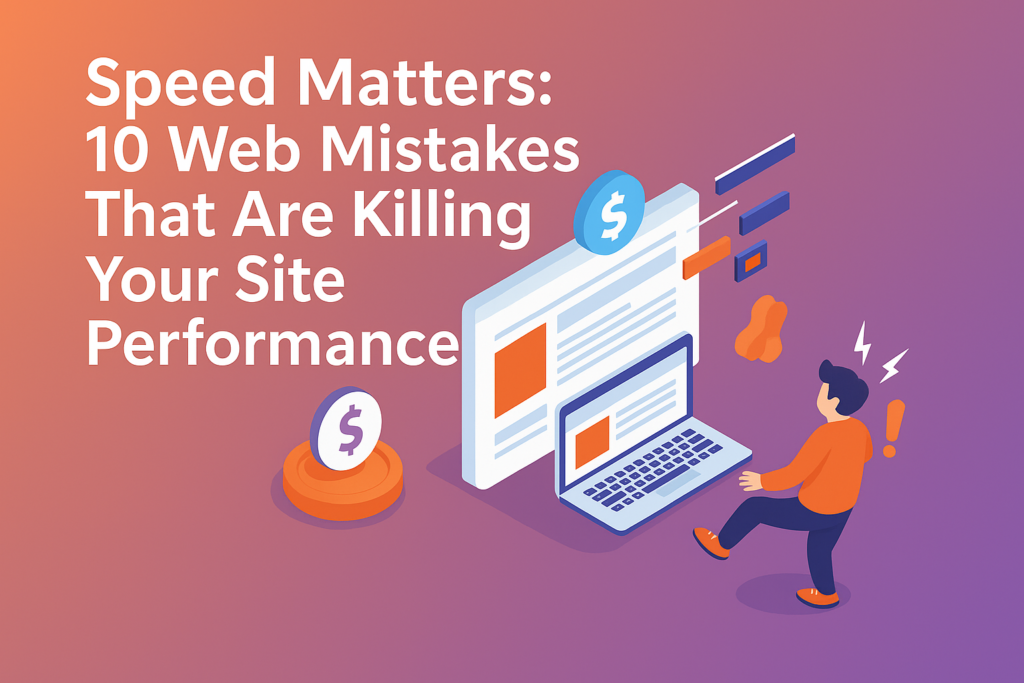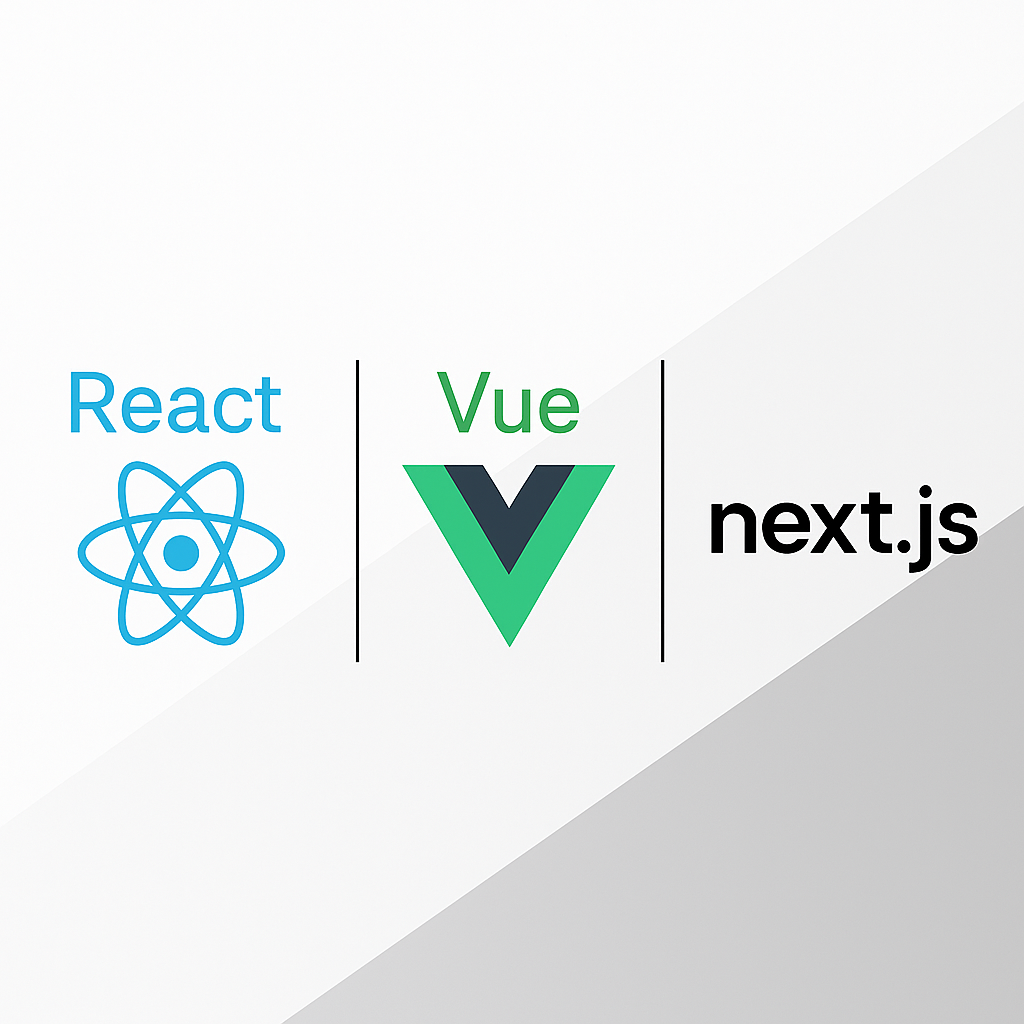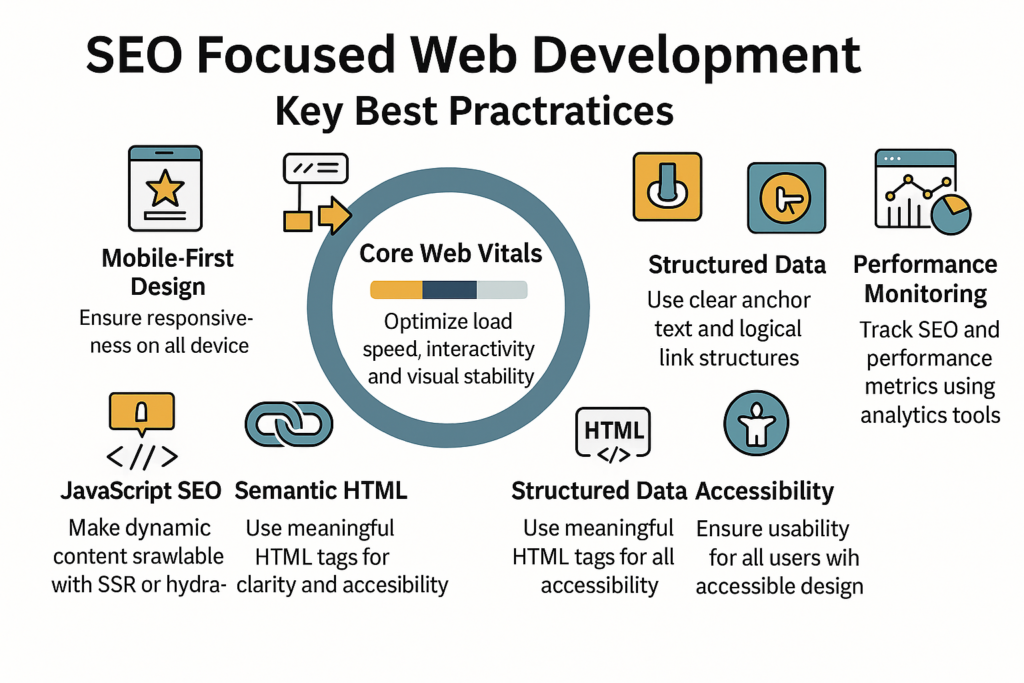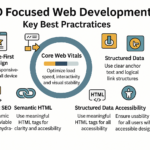Once, releasing software felt like walking a tightrope—slow, stressful, and full of uncertainty. Developers pushed code, testers scrambled to catch last-minute bugs, and deployment often led to downtime. But today, software moves fast, and users expect instant updates, zero disruptions, and flawless performance.
That’s why Continuous Integration and Continuous Deployment (CI/CD) have become essential. By automating building, testing, and deployment, CI/CD eliminates bottlenecks, reduces errors, and accelerates releases. No more risky launch days. No more firefighting. Just smooth, reliable updates at the speed your business demands.
In this blog, you’ll discover how CI/CD reshapes software delivery and why adopting it is crucial for success in modern development.
1. Understanding CI/CD
What is CI/CD?
- CI/CD is a system that automates coding, testing, and deployment, making software development faster and more reliable by reducing manual work and catching errors early in the process. It consists of:
Continuous Integration (CI):
- Continuous Integration (CI) means you regularly add your code to a shared project. Each time you do this, an automated system checks for errors by running tests and building the project. This helps catch mistakes early, keeping everything stable. It’s like a group project where your work is checked instantly to make sure it all fits together.
Continuous Deployment/Delivery (CD):
- Continuous Delivery: Continuous Delivery means your code goes through all testing stages automatically, making sure everything works. Once it passes, it’s ready for you to deploy manually or let the system do it for you. This keeps releases smooth and reliable.
- Continuous Deployment: Continuous Deployment means that when your code passes all tests, it goes live automatically without you needing to do anything. This reduces manual work and ensures that updates reach users quickly while keeping everything running smoothly.
Why is CI/CD Important?
- Without CI/CD, you have to test and deploy your code manually, which takes a lot of time and increases the chances of mistakes. Every time you make changes, you need to check everything yourself, making the process slow and unreliable.
-
- 1. Bugs may go unnoticed, causing problems for users.
-
- 2. Deploying updates manually can lead to inconsistencies where some features work while others break.
-
- 3. Fixing errors after deployment takes extra effort, delaying improvements.
- Without automation, teamwork becomes harder, as different versions of code might conflict. The entire development process becomes slower, more stressful, and less efficient without a reliable testing and deployment system.
2. The Evolution of Software Development
a. Traditional Software Development
- In traditional software development, you have to manually add your code to the project and test it yourself. Every time you make changes, you check for errors, which takes time and can lead to mistakes. Without automation, the process is slower, and fixing problems becomes harder, making development more difficult and less efficient for you. This approach often led to:
1. Delayed Releases
- Since you test and deploy everything manually, releasing updates takes a long time. Each step requires extra effort, and mistakes can slow things down even further.
2. High Error Rates
- When you do everything manually, you’re more likely to make mistakes. Without automation, errors can slip through, making your project unstable.
3. Inconsistent Environments
- Your code may work during development but fail in testing or production due to different settings, causing unexpected issues and delays.
b. Agile and DevOps Transformation
- With Agile and DevOps, software development has become more team-based and flexible. Instead of working in long phases, you now make minor, frequent updates. This helps you collaborate better, fix issues faster, and improve your project step by step. CI/CD complements these approaches by:
1. Enabling faster feedback loops
- Faster feedback loops mean you get quick responses on your work. When you make changes, tests and reviews happen fast, helping you find and fix issues early. This way, you improve your project step by step without long delays.
2. Supporting frequent, small changes
- It means you update your project in small steps instead of making big changes all at once. This approach helps you catch mistakes early, fix issues quickly, and keep everything running smoothly without major disruptions.
3. Promoting collaboration between development and operations teams
- This means you collaborate closely with both teams to develop and manage software. It helps you resolve issues faster, implement updates smoothly, and ensure everything runs efficiently without delays or miscommunication.
3. Key Components of CI/CD
a. Version Control System (VCS)
- A Version Control System (VCS), like Git, GitHub, or GitLab, helps you store and track code changes. It lets you work with others, create separate versions of your code, and combine updates easily. This way, you can collaborate smoothly, avoid mistakes, and keep your project organized without losing important changes.
b. Automated Build System
- An automated build system takes your code and turns it into a working program without you doing it manually. It compiles your code, checks for errors, and creates a final version. This saves you time and ensures everything works correctly. Popular tools you can use include Jenkins, GitHub Actions, GitLab CI/CD, and CircleCI.
c. Automated Testing
- Testing helps you make sure that your new code doesn’t create problems in your project. Every time you make changes, test to check if everything still works correctly. This way, you can catch mistakes early, fix them quickly, and keep your application running smoothly without unexpected issues. Common types of automated tests include:
-
- Unit Tests: Verify individual components.
-
- Integration Tests: Ensure different modules work together.
-
- Functional Tests: Validate end-to-end functionality.
d. Deployment Automation
- Deployment automation helps you send tested code to live or testing environments with little effort. Instead of doing it manually, tools like Ansible, Docker, and Kubernetes handle the process. This makes updates faster, reduces mistakes, and keeps everything running smoothly without you having to worry about every step.
e. Monitoring and Feedback
- Monitoring tools like Prometheus, Datadog, and New Relic help you track how well your application is running in real time. If something goes wrong, they send alerts so you can fix issues quickly. This feedback loop ensures your application stays fast, stable, and reliable.
4. Benefits of CI/CD
a. Faster Time to Market
- CI/CD helps you by automating repetitive tasks like coding, testing, and deployment. This saves you time and effort, making the process faster and smoother. With automation, you can release new features and updates quickly, keeping your application up to date without delays or extra manual work.
b. Improved Code Quality
- Automated testing checks your code to make sure it works correctly before it gets added to the project or released. If there’s a mistake, you get instant feedback so you can fix it early. This helps you keep your code high-quality and error-free.
c. Enhanced Collaboration
- CI/CD helps you work better with development, testing, and operations teams. Instead of everyone working separately, you all collaborate to build, test, and deploy software smoothly. This removes barriers between teams and creates a DevOps culture, making the development process faster, more efficient, and more reliable.
d. Reduced Risk and Failures
- By integrating and testing your code frequently, you reduce the chances of failures when deploying updates. If something goes wrong, you can quickly roll back to a previous version or apply a hotfix to fix issues. This makes your application more stable and easier to manage.
e. Increased Customer Satisfaction
- When you release updates faster and with fewer bugs, customers get a smooth and reliable experience. They don’t have to deal with crashes or errors, making them happy with your software. High-quality software builds trust, keeps users satisfied, and encourages them to keep using your application.
5. CI/CD Workflow: How It Works
Step 1: Code Commit
- First, when you write and save your code in a version control system (VCS) like Git, it gets stored safely. Each time you make a new update, the CI/CD pipeline starts automatically. It checks your code, runs tests, and prepares it for deployment, helping you catch errors early and keep everything running smoothly.
Step 2: Build and Compile
- Then, the automated build system takes your code and converts it into a functioning program. It compiles everything, checks for errors, and prepares it for testing. This saves you time and ensures that your code is properly built before moving to the next stage of development.
Step 3: Automated Testing
- After that, Automated tests check your code to make sure everything works correctly. Unit tests check small parts, integration tests see how different parts work together, and functional tests ensure the whole system functions properly. If your code passes all tests, the pipeline moves forward, helping you catch mistakes early and keep everything running smoothly.
Step 4: Artifact Creation
- After your code passes the test, the application is packaged into a file that can be easily deployed, such as a Docker container or a JAR file. This makes it easier for you to move your application between different environments, ensuring it runs consistently everywhere without issues.
Step 5: Deployment to Staging
- Then, the packaged file (artifact) is sent to a staging environment, which is like a testing area before release. Here, more tests and checks are done to make sure everything works correctly. This helps you catch any last issues before deploying your application to real users.
Step 6: Production Deployment
- Finally, your code changes go live automatically once they pass all tests in the Continuous Deployment process. You don’t need to do anything manually. In Continuous Delivery, the code is ready to go live, but you or your team must manually approve and deploy it after final validation.
6. Best Practices for Implementing CI/CD
a. Start Small and Scale Gradually
- Start by automating a small part of your work process and slowly add more steps over time. This helps you spot problems early and fix them before they become bigger issues. By taking small steps, you can make the transition to automation smoother and more effective.
b. Maintain a Clean Codebase
- Make sure your code is organized, well-documented, and easy to update. When your code is clean and structured, it becomes easier for you to run automated tests and deploy changes smoothly. This helps you avoid errors, save time, and keep your project running efficiently.
c. Use Feature Flags
- Feature flags let you release new features to only some users first. This helps you test if everything works before making changes for everyone. You can also turn features on or off without changing the code, making updates safer and more flexible.
d. Implement Security Best Practices
- Add security checks and vulnerability scans to your CI/CD pipeline to keep your application safe. This helps you find and fix security risks early, protecting your project from potential threats. By making security a part of your process, you ensure a safer and more reliable application for users.
e. Monitor and Analyze Performance
- Use monitoring tools to check how well your application is running. These tools help you spot problems, find unusual behavior, and gather useful data. By tracking performance, you can fix issues quickly and keep improving your application to make it more reliable and efficient for users.
f. Emphasize Collaboration
- Encourage cooperation between developers, testers, and operations teams to make the CI/CD process successful. When you work together, you can find and fix issues faster, improve efficiency, and ensure smooth software updates, leading to a more reliable and high-quality application.
7. Popular CI/CD Tools and Platforms
a. Jenkins
- Jenkins is a free automation tool that helps you build, test, and deploy applications easily. It supports many plugins, allowing you to customize it for different tasks. With Jenkins, you can automate repetitive work, find errors faster, and make your software development process more efficient and reliable.
b. GitHub Actions
- GitHub Actions help you automate CI/CD workflows inside your GitHub repository. Instead of manually testing and deploying your code, you can set up automated tasks that run whenever you make changes. This saves time, reduces errors, and ensures your project is always tested and ready for deployment without extra effort.
c. GitLab CI/CD
- GitLab offers a built-in CI/CD system that helps automate the entire software development process. It handles coding, testing, and deployment, making your work faster and easier. With GitLab, you don’t have to do everything manually, reducing errors and ensuring your application is always tested and ready for release.
d. GoCD
- GoCD is a free CI/CD tool that helps you automate software development. It allows you to build, test, and deploy your code step by step using pipelines. With GoCD, you can track changes, catch errors early, and release updates smoothly, making the development process faster and more efficient.
e. CircleCI
- CircleCI provides a cloud-based CI/CD system that helps you automate building, testing, and deploying your code. It works smoothly with GitHub and Bitbucket, making it easier for you to manage projects. With CircleCI, you can quickly find errors, speed up development, and ensure your application runs correctly before releasing it.
f. Travis CI
- Travis CI is a cloud-based tool that helps you automatically test and deploy your code. It works for both open-source and private projects, saving you time and effort. With Travis CI, you don’t have to run tests manually—it checks your code for errors and ensures everything works before deployment.
8. Common Challenges and How to Overcome Them
- While CI/CD offers numerous benefits, implementing and maintaining an effective pipeline comes with its own set of challenges. Organizations often encounter issues such as unreliable tests, environment inconsistencies, security vulnerabilities, and complex tooling. Addressing these challenges is essential to ensure a smooth and efficient CI/CD process. In this section, you’ll understand the most common pitfalls and receive actionable solutions to overcome them effectively.
a. Flaky Tests
- Challenge: Flaky tests give different results even when the code hasn’t changed. This can confuse you by showing false errors or missing real issues. Because of this, you might waste time fixing problems that don’t exist or miss important bugs, making your testing process less reliable and harder to trust.
- Solution: To avoid flaky tests, you should regularly check and update your test cases. Make sure tests are stable and run in the same way every time. Fix any unreliable tests and remove ones that give false results. This helps you get accurate feedback and ensures your application works correctly.
b. Environment Configuration Issues
- Challenge: When your development, testing, and production environments are different, your code might work in one but fail in another. These differences can cause unexpected errors, making it harder to find and fix problems. This can lead to delays, failed deployments, and unstable applications, creating frustration for both developers and users.
- Solution: To prevent errors caused by different environments, use Infrastructure as Code (IaC). This helps you set up development, testing, and production environments in the same way every time. With IaC, you can automate configurations, reduce mistakes, and ensure your application runs smoothly in all stages.
c. Security Vulnerabilities
- Challenge: If your CI/CD pipeline is not properly secured, it can be exposed to security risks like unauthorized access, data leaks, or malicious code injections. Hackers or even internal mistakes can lead to serious problems, putting your application and user data at risk. Without strong security measures, your system remains vulnerable to attacks.
- Solution: To keep your CI/CD pipeline secure, use Role-Based Access Control (RBAC) to limit who can make changes. Also, run regular security audits to find and fix risks before they become problems. This helps protect your code, prevent unauthorized access, and keep your application safe from security threats.
d. Tooling Complexity
- Challenge: Picking and setting up the right CI/CD tools can feel confusing because there are so many options. If you choose tools that are too complex, it can slow you down and make things harder to manage. Without the right setup, your CI/CD process may become inefficient and difficult to use.
- Solution: To keep your CI/CD pipeline secure, use Role-Based Access Control (RBAC) to limit who can make changes. Also, run regular security audits to find and fix risks before they become problems. This helps protect your code, prevent unauthorized access, and keep your application safe from security threats.
9. Real-World Case Studies: CI/CD Success Stories
a. Netflix
- Netflix uses CI/CD pipelines to update thousands of microservices every day. By automating testing and deployment, they make sure their platform runs smoothly without downtime. This helps deliver a seamless user experience so you can stream movies and shows without interruptions or technical issues.
b. Amazon
- Amazon uses CI/CD to constantly add new features to its e-commerce platform. This helps them improve the website quickly and fix issues fast. By updating the platform often, Amazon can respond to customer feedback, making shopping easier and providing a better experience for users like you.
c. Facebook
- Facebook uses CI/CD to release updates and new features without stopping the service. Its advanced system makes sure updates happen smoothly, with little to no downtime. This helps keep Facebook reliable so you can use it without interruptions while always getting the latest improvements and features.
10. Future Trends in CI/CD
a. AI and Machine Learning Integration
- AI-powered CI/CD pipelines help make software development smarter and faster. They can automatically find unusual issues, predict possible failures, and suggest ways to improve performance. This means you don’t have to manually check for errors, saving time and effort. AI helps detect problems early, reducing the chances of system crashes or bugs. It also learns from past data to make better decisions over time. With AI, your CI/CD pipeline becomes more efficient, ensuring smoother updates and reliable software. This makes development easier and helps deliver high-quality applications without unexpected errors or delays.
b. Serverless CI/CD Pipelines
- Serverless CI/CD helps you automate software testing and deployment without managing servers. Instead of worrying about infrastructure, you can focus on writing code and improving your application. This reduces setup time, lowers costs, and makes updates faster. With serverless CI/CD, your team can work more efficiently, as the system automatically scales based on your needs. It also improves reliability because cloud providers handle maintenance and security. By removing the need to manage servers, you can spend more time developing new features and fixing issues, making the entire software development process smoother and more productive.
c. Shift-Left Security
- Security will be added at the beginning of the development process to keep your application safe. This means checking for security issues early so that problems can be fixed before they cause harm. By identifying vulnerabilities sooner, you can prevent hackers from attacking your system. Regular security checks help you catch risks and keep your code strong. This ensures your software stays safe, reliable, and ready for users. When security is a priority from the start, you reduce the chance of major issues later, saving time and effort while protecting your application from threats.
Conclusion
- Embracing CI/CD is no longer an option—it’s a necessity for delivering high-quality software at lightning speed. By automating code integration, testing, and deployment, you can minimize errors, enhance team collaboration, and significantly reduce time to market. As technology advances, CI/CD will remain the backbone of agile software development, enabling organizations to stay competitive and meet evolving customer demands.
- Ready to revolutionize your software delivery? Start by choosing the right tools, implementing industry best practices, and fostering a culture of continuous improvement. Don’t wait — adopt CI/CD today and take your software development process to the next level!








